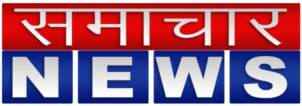Last month, our teams visited Narsan, a village in the Haridwar district of Uttarakhand. Generally, our initial question during community meetings is about the accessibility of social protection. This time, the response was not straightforward but rather a reflection of what Bharat expects from its government: “What is the use of the Aadhaar card linked to our mobile phones? Why can’t we receive a notification on the phone when we are eligible for a new scheme?”

This simple question highlights the broader systemic challenges India faces today. Over the past decade, there have been transformational changes in the country’s social protection system; 32.4 crore of the poorest individuals now have free health insurance under the Ayushman Bharat scheme and more than eight crore LPG connections have been distributed nationwide under the Ujjwala Yojana. Digital infrastructure has become central to the delivery of these schemes, with a focus on customisation to cater to specific trades and the formalisation of welfare.
However, as India approaches its centenary, these measures are insufficient. With an anticipated population of about 1.6 billion by 2047, half of whom will be urban, the social welfare system requires re-evaluation. Large enrolment figures have led to demands for better post-linkage support for grievances. With the advent of digital IDs and documentation, their effective use and relevance in application processes are being questioned. While digital public infrastructure can address many of these challenges, the dynamic socio-economic landscape of the country calls for greater transparency, support, and ease.
To put things in perspective, what constitutes Bharat? In their Indus Valley Annual Report 2024, Blume Ventures discusses the segmentation of India, based on Kishore Biyani’s concept, into three categories: India 1 (~30M households with a per capita income of $15K), India 2 (~70M households with a per capita income of $3K), and India 3 (~205M households with a per capita income of $1K).
Currently, welfare schemes are largely designed for India 3, although India 2 is also eligible. Indeed, for the urban poor, who make up a significant portion of India 2, the need for welfare support is even more critical. We would like to emphasise three core aspects that require attention as we move towards 100:
· Scheme discovery: Like the community in Uttarakhand, many are unaware of eligible schemes or even their existence! Services targeted at India 1 today, such as home loans, are aggressively promoted, sometimes at the expense of potential customers’ privacy. This level of promotion is absent for welfare schemes. Thus, how can we enable a digital public good (DPG) or digital public infrastructure (DPI) strategy to solve this at scale? Solutions should facilitate local language scheme discovery and provide accurate and updated information. Building a system that makes eligibility confirmation easy or even pre-approved, similar to a loan product, will pave the way for support services for applications and enrolment.
· Customer support: Currently, end-users of welfare schemes in India are classified as ‘beneficiaries’, often overlooking the need for post-linkage services. We need to start viewing these individuals as customers to offer them post-enrolment support, particularly in schemes like insurance. Although the Ayushman Bharat covers over 32 crore Indians, the claim rate does not match this figure. One reason for this could be the gap in financial and digital literacy. Shifting the mindset from beneficiaries of the State to stakeholders and customers will help ensure that we develop products and services that address these issues, promoting broader financial inclusion and equity.
· Seat at the table for citizens: Many schemes and policies are aligned with political manifestos, with little input from end-users, especially regarding processes. For example, during an interaction with a community in Dharavi, Mumbai, a migrant said, “Why can’t we have one single identity card which we can use everywhere—at my hometown, at the place of work? Why do we need different documents for applying to different schemes?” Such feedback loops need to be institutionalised so that policymakers can revisit processes and there’s greater civic participation leading to active citizenship. There is a need for continuous feedback and engagement with end-users to make the process more inclusive and straightforward. And with Artificial Intelligence and LLMs, we can easily address this via platforms and other tools.
Beyond technology, the most crucial aspect of scaling and solving for social protection for all when India reaches 100 is the collaboration of multiple stakeholders. For instance, devising a viable financial model that promotes village-level entrepreneurs to adopt it will ensure more innovation. This will also mean a perfect synergy between markets and governments to solve for the end-users and reaffirm the collaboration of samaaj, sarkar, and bazaar to solve at scale.
This article is authored by Aniket Doegar, CEO and co-founder and Madhura Karnik, chief growth officer, Haqdarshak.
This post is auto-grabbed with the software. The copyright belongs to Source link




